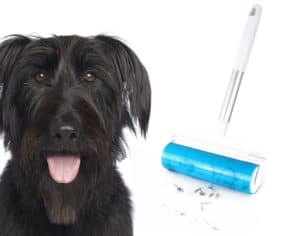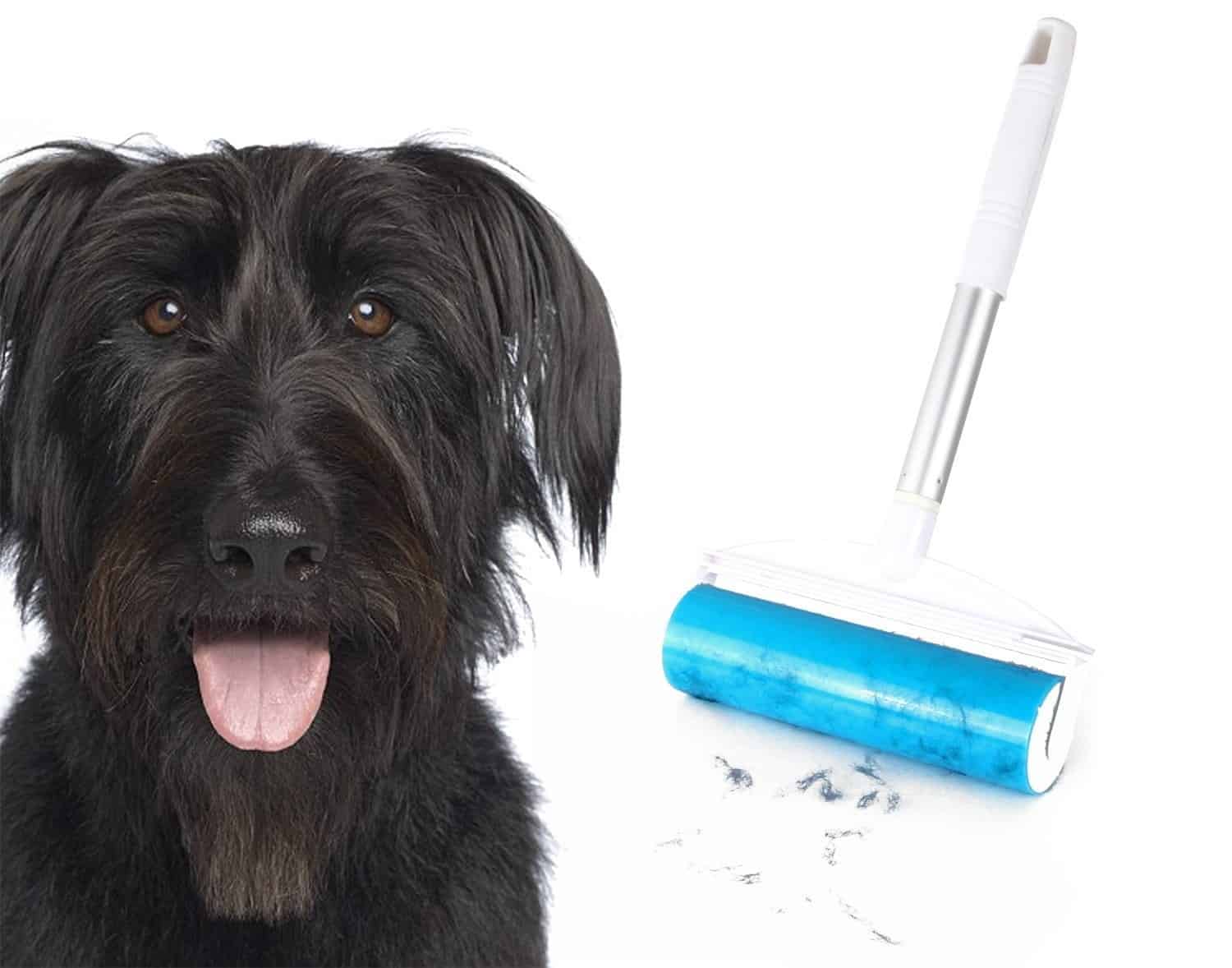 Here we discuss how to remove gunk like petroleum-based products, tarry substances, gum, glue, or sticky and sugary stuff from your dog’s hair. Always remember to bathe your dog in a pH-balanced dog shampoo and to apply a good dog-fur conditioner after you’ve removed the problem substances. And don’t forget to thoroughly rinse all soapy residues from your dog’s coat.
Here we discuss how to remove gunk like petroleum-based products, tarry substances, gum, glue, or sticky and sugary stuff from your dog’s hair. Always remember to bathe your dog in a pH-balanced dog shampoo and to apply a good dog-fur conditioner after you’ve removed the problem substances. And don’t forget to thoroughly rinse all soapy residues from your dog’s coat.
If the problem substances are overwhelming and you don’t think the methods for removing them will get the job done, you may want to resort to using electric clippers to remove the matted fur or even ask your vet or a pet groomer to do it for you.
Never use scissors to cut any of these substances from your dog’s fur coat because you risk cutting his skin and a bloody trip to the emergency vet for sutures. Furthermore, never use the electric clippers while your dog is in the wash tub. You and your dog risk electrocution.
Removing petroleum-based chemicals
Greasy stuff — motor oil, grease, and other petroleum products — can become sticky nightmares for pet owners and pets. Licking off a bit of oil can upset your dog’s digestive tract, so don’t allow such substances to stay on your dog’s coat for any extended period of time. Besides petroleum products, dogs can get into other dangerous fluids. Antifreeze is one such culprit that can be lethal. The more quickly you get this stuff off your dog, the safer she is.
For almost all types of oils, an emulsifying, hand dishwashing soap like Dawn is your best bet. Environmentalists who clean up oil-covered birds and other marine wildlife use Dawn to break down and get rid of the oil. Besides, it’s an extremely safe soap, provided you don’t get any in your dog’s eyes.
Here are the steps for cleaning off an oily dog:
- Using paper towels, blot or wipe off as much excess oil from your dog HS you can.
- Draw a tub of tepid water, add emulsifying (grease-cutting) dishwashing soap, and then put your dog in the tub.
- Apply the dish soap solution liberally throughout your dog’s coat, lathering her up well.
Be sure to work the soapy solution all the way to her skin. - Thoroughly rinse the soap from your dog’s coat. You may need to drain the tub and rinse well a second time to make sure that the soap residue is removed.
- Check your dog’s coat for any oily residues; repeat Steps 2 through 4, lathering and rinsing your dog as necessary until the oil is gone.
While lathering and rinsing, be careful around your dog’s eyes. You don’t want to get any soap or chemicals in them.
Removing Tar
Actual tar from roads and other tarry substances, like tree sap and creosote, can be a nightmare to get out of a dog’s fur. If the stuff is still soft and warm, you may be able to use a grease-cutting, emulsifying dish soap, especially if the tarry substance is petroleum-based. Never ever use solvents or chemicals to remove the tar. They can be caustic and burn your dog.
Try one or both of the following methods for getting the tar out:
- Soak the affected areas in a mixture of warm water and emulsifying dish soap for 10 minutes to find out whether the soap will loosen the substance. Then use a medium-toothed comb to remove the tar if you can.
- Blot the area dry first. Then keep the substance warm with a warm, wet dishrag, or use the body heat from your fingers while working vegetable oil into the tarry substance. This method sometimes enables you to remove the tar.
If neither of these methods works or the tarry substance is too widespread, you may have to use electric clippers or consult with a professional groomer or veterinarian to help you get the tar out of your dog’s coat.
Removing Chewy Gums
Chewing gum is one of the least favorite things to find in a dog’s hair. It usually happens because some kid left a wad of chewed gum on the blacktop outside, and it became a gooey concoction that sticks to your dog’s hair, to shoe bottoms, and just about anything else.
You’ll probably have better luck getting most of it out while it’s still warm. Use warm water to loosen the gum and help get rid of most of it. Then try working in vegetable oil to break down the gum. Some people recommend peanut butter, but that’s about the same as using vegetable oil — instead of the oil from the peanuts.
Remove gum by following these steps:
- Soak the gummed up areas in warm water to loosen the gum.
- Pick out what gum you can with a medium- to fine-toothed comb.
- Blot the area dry, and rub vegetable oil into the remaining warm gum. The oil should help break down the sticky properties of the gum so you can remove it carefully with your fingers.
- Use electric clippers to remove any remaining gum. When the gummy area is widespread, you may need to seek the help of a veterinarian or professional groomer.
Removing Glue
Glue can create a pretty sticky situation when it comes to dog hair, because so many different adhesives are on the market. Some are dangerous; others aren’t a big deal. Household or craft glues like Elmer’s School Glue are usually water soluble, nontoxic, and fairly easy to remove.
However, if your dog gets into something serious like superglue or some type of ultra-strong bonding agent, you’d better read the labels to get a better idea what you’re up against. The really toxic stuff needs to be treated like poisonous chemicals.
Try the following for removing various types of glue:
- Water-based glue: if the glue is water-based, use warm, soapy water (with a dishwashing soap like Dawn) to clean the area, and then follow up with a bath.
- Contact cement: If the glue is a type of contact cement, read the label to determine the best way to remove it and follow the directions. If the directions require some pretty hazardous chemicals, seek professional advice from a veterinarian or poison-control hotline.
Removing Corn Syrup
Corn syrup, honey, molasses, and other sticky sweet stuff become a nightmare in a dog’s hair. The combination of sugar and dog hair pits the good news against the bad news.
First the good news: Almost all sugar problems can be remedied with warm water and an emulsifying dish soap. After all, sugar dissolves well in warm water, and the gunk breaks down when confronted with an emulsifier (Dawn works well), which helps substances mix with water.
The bad news: If you don’t get the entire sugary mess out on the first try, you’ll probably have a real mess on your hands, because sticky sugar attracts dirt and causes nasty mats.
To remove sugary substances from your dog’s coat, do the following:
- Pour a tepid bath, add an emulsifying dish soap, and put your dog in the tub.
- Apply the soapy solution liberally throughout your dog’s coat, and soap her up well. Be sure to work it in all the way to her skin. If you find hardened lumps of sugar, dissolve them and work them loose with warm water and soap by rubbing them between your fingers.
- Rinse well, drain the tub, and rinse well again.
- Check the coat for any sugary residues and repeat Steps I through 3 until the sugar is gone.

